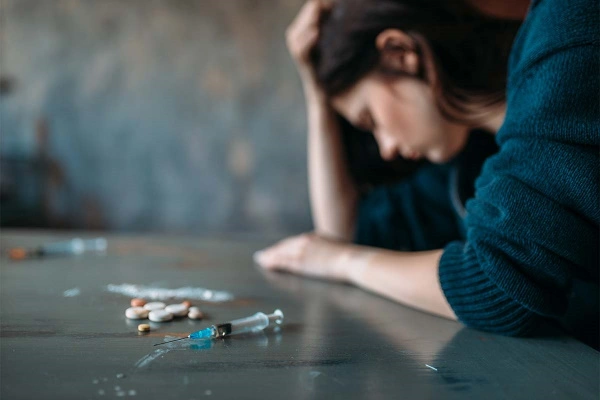Smoking genes

If you tested your DNA with a personal genomics service like 23andMe, AncestryDNA, FamilyTreeDNA, MyHeritage or another testing company, you can learn more about your risk factors for hundreds of diseases. By clicking the button above ⬆️, you can upload your raw DNA data file and receive a personalized 250-page health report with research links that is the most comprehensive.
Every year, tobacco smoking causes the demise of five million individuals worldwide and heightens the likelihood of acquiring various ailments, particularly pulmonary and cardiovascular diseases, as well as multiple cancers. While it has been established that several environmental factors impact the choice to smoke, recent discoveries have shed light on the influence of genes in the development of nicotine dependence. Studies on twins and families have revealed that there is no single gene that dictates the likelihood of developing a smoking addiction, but rather multiple genes that increase an individual's vulnerability to nicotine addiction.
The rates at which individuals metabolize nicotine can vary greatly. The primary enzyme responsible for nicotine metabolism is encoded by CYP2A6, which accounts for about 80% of nicotine oxidation in the liver. Over 60 different CYP2A6 alleles have been identified, including SNPs, duplications, deletions, and conversions. These alleles have been categorized into three groups based on their metabolic activity: slow, intermediate, and normal. The frequency of these alleles varies significantly among different ethnic groups. Individuals with null or reduced activity CYP2A6 alleles are more likely to be non-smokers, smoke fewer cigarettes per day, have a lower risk of nicotine dependence, may find it easier to quit smoking, and have a lower risk of lung cancer.
The second most active P450 enzyme in nicotine oxidation is CYP2B6 (cytochrome P450, family 2, subfamily B, polypeptide 6), with a catalytic efficiency of approximately 10% compared to CYP2A6. While CYP2A6 is mainly expressed in the liver, CYP2B6 is expressed at higher levels in the brain, which may explain the localized metabolism of nicotine in the brains of human smokers.
The presence of the functional variant D398N (rs16969968) in CHRNA5 significantly impacts smoking behavior, making it a crucial factor for MR analyses. The CARTA consortium, led by Professor Marcus Munafò from the University of Bristol, UK, is currently conducting a large-scale MR meta-analysis that focuses on rs16969968. The study aims to identify causal effects of smoking quantity on various outcomes, such as smoking cessation, obesity, regional adiposity, income, vitamin D levels, lipids, blood pressure, and depression.
Follow the link of the selected polymorphism to read a brief description of how the selected polymorphism affects Tobacco addiction and see a list of existing studies.
SNP polymorphisms related to the topic Tobacco addiction:
| rs16969968 | The nicotinic acetylcholine receptor risk allele in CHRNA5 causes a higher risk of nicotine dependence, lung cancer, but a lower risk of cocaine dependence. |
| rs3003609 | The (T) rs3003609 allele is associated with heavier smoking and hence nicotine dependence, at least in Caucasians. |
| rs1800497 | TaqIA polymorphisms of the DRD2 dopamine D2 receptor gene are associated with concomitant alcohol use and depressive disorders. |
| rs4887067 | CHRNA5-A3-B4 region as a risk factor for age-related nicotine dependence. |
| rs1051730 | CHRNA3 single nucleotide polymorphism increases the risk of lung cancer by 1.8 times. It also contributes to a decreased response to alcohol, so there may be an increased risk of alcohol abuse. |
| rs755204 | Association between CHRN genetic variants and dizziness on first inhalation of cigarette smoke. |
| rs1317286 | Alleles of alpha-5/alpha-3 nicotinic receptor subunits increase the risk of heavy smoking. |
| rs8034191 | A region of chromosome 5p15 associated with the risk of adenocarcinoma. |
| rs680244 | |
| rs4952 | |
| rs17487223 | |
| rs11637635 | |
| rs12898919 | |
| rs17408276 | |
| rs17486278 | |
| rs3829787 | |
| rs495956 | |
| rs503464 | |
| rs555018 | |
| rs55781567 | |
| rs55853698 | |
| rs8042374 | |
| rs569207 | |
| rs601079 | |
| rs6495306 | |
| rs667282 | |
| rs951266 | |
| rs12914385 | |
| rs737865 | |
| rs684513 | |
| rs9217 | |
| rs12910984 | |
| rs3743073 | |
| rs3743074 | |
| rs3743075 | |
| rs3743076 | |
| rs3743077 | |
| rs3743078 | |
| rs6495308 | |
| rs6495309 | |
| rs660652 | |
| rs8023462 | |
| rs8040868 | |
| rs8192482 | |
| rs938682 | |
| rs279858 | |
| rs11200638 | |
| rs1049331 | |
| rs2672598 | |
| rs1938901 | |
| rs996999 | |
| rs2229940 | |
| rs1044396 | |
| rs1044394 | |
| rs1044397 | |
| rs121909580 | |
| rs121912243 | |
| rs2236196 | |
| rs2273502 | |
| rs2273504 | |
| rs2273505 | |
| rs3787137 | |
| rs4522666 | |
| rs796052317 | |
| rs588765 | |
| rs13277254 | |
| rs2072660 | |
| rs4953 | |
| rs2036527 | |
About The Author
Li DaliLi Dali, a National Foundation for Outstanding Youth Fund recipient, is a researcher at the School of Life Sciences in East China Normal University. He earned his PhD in genetics from Hunan Normal University in 2007 and conducted collaborative research at Texas A&M University during his doctoral studies. Li Dali and his team have optimized and innovated gene editing technology, leading to the establishment of a world-class system for constructing gene editing disease models.


